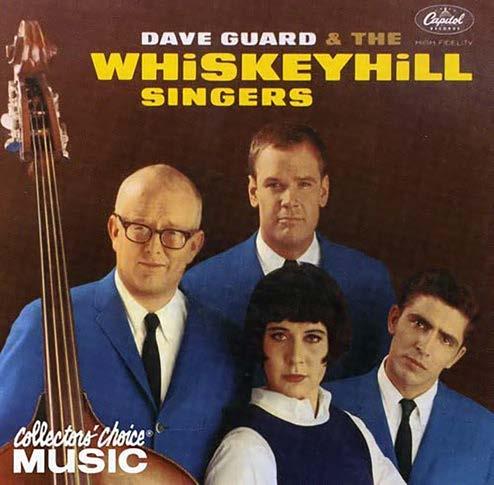
5 minute read
Classic Album: Stevie Ray Vaughan’s Texas Flood
By Billy Pinnell

Advertisement


STEVIE RAY VAUGHAN TEXAS FLOOD

The 1983 release of David Bowie’s Let’s Dance album was significant for at least two reasons. After signing one of the most lucrative recording contracts in music history up to that time, Bowie repaid his new record label by achieving the biggest sales of his career first time out. The other was the unexpected participation of the studio band’s lead guitarist, 29-year-old Stevie Ray Vaughan, an unknown musician from Austin, Texas who would, in the following 12 months inspire a blues-rock revival that has endured to this day. The passion, power and drive that Bowie obviously saw in his playing had already earned the young musician legendary status among audiences who’d followed him from one bar to another in Austin over the preceding decade. His deep devotion to the blues and his incredible talent would elevate Stevie’s name to the highest rung of the blues ladder to sit comfortably among his mentors and inspirations: B.B.King, Buddy Guy, Albert Collins, Freddie King, Hubert Sumlin, Albert King, Elmore James, Muddy Waters, Lonnie Mack, Jimi Hendrix. What made Stevie so special was an ability to immerse himself in the music of these blues giants and countless other musicians from whom he would imbibe the best of what he heard then add his own distinctive touch. He also tapped into the spirituality of the blues, possessing a deep understanding of its emotional power, the indeterminable ‘feel’ that would reveal itself in his guitar playing. Stevie Ray’s earliest influence was his older brother Jimmie (later to found The Fabulous Thunderbirds) who played in various blues and R&B bands around Dallas, Texas where the Vaughan family lived. An outstanding guitar player in his own right, Jimmie introduced his young sibling to a world of blues, R&B and jazz as they listened together to his record collection and the local radio stations. After vain attempts to play drums, bass guitar and trombone, Stevie figured that if his big brother was playing guitar he’d give it a go as well. Performing in high school bands as Steve Vaughan, the 17-year-old guitarist dropped out in 1971 to become a full-time musician, following Jimmie to Austin, the musical Mecca of Texas where he would hone his talents on the club circuit. Joining Paul Ray & The Cobras a popular Austin band, Stevie learned the art of performing in front of an audience playing guitar behind his back, with his teeth even laying it on the floor and tapping it with his feet. Despite the gimmicks (T-Bone Walker and Johnny ‘Guitar’ Watson had employed the same tricks for years) it was obvious that Jimmie Vaughan’s little brother wasn’t just another flashy, run-of-the mill blues guitar player. The give-away was the ease in which he moved effortlessly from hard edged blues-rock to quiet jazz like passages, qualities that would prevail throughout the many recordings he was yet to make.
84
In 1977, after three years with The Cobras, Stevie left to form a blues/R&B band, The Triple Threat Review renaming them Double Trouble in 1980. With drummer Chris Layton and bass guitarist Jackie Newhouse, the group debuted at a club in Austin. This performance featuring two of Stevie’s songs that included an early arrangement of ‘Tin Pan Alley’ (destined to become one of his showstoppers) plus material from Freddie King, Otis Rush, Howlin’ Wolf, Muddy Waters and Guitar Slim, would be released on the 1992 album In The Beginning by Stevie Vaughan & Double Trouble, their stage name at that time did not include Stevie’s middle name. Early in 1981 Tommy Shannon who’d been in a band with Stevie ten years earlier and more recently had played bass in Johnny Winter’s band replaced Jackie Newhouse. The series of events that followed proved to be life changing for Stevie. A tape of a performance at an Austin music festival somehow wound up in the hands of Mick Jagger who offered to fly Stevie and Double Trouble to New York to play at a private party for The Rolling Stones. Word on the street was that a guitar player from Austin Texas unknown outside his home state had taken his first steps towards international recognition. Famed record producer Jerry Wexler heard the jungle drums and after seeing the band perform contacted Claude Nobs, long time director of the prestigious Montreux Jazz Festival urging him to include Stevie Ray Vaughan & Double Trouble in the line-up for the 1982 festival. The band became the first unsigned act to perform at Montreux. Despite a powerful performance they did not go over all that well with some of the crowd booing.Two members of the audience not booing were David Bowie who invited Stevie to play on his Let’s Dance album and Jackson Browne who offered the band free studio time at his Downtown Studios in Los Angeles. In that studio in less than 48 hours, the tracks for the band’s first official release, Texas Flood were recorded. The tapes were presented to legendary talent scout and recording executive John Hammond who signed the band to Epic Records. Texas Flood consisted of road-tested songs like the title track, a slow blues originally recorded by Houston bluesman Larry Davis, Stevie’s rocking ‘Rude Mood’, a salute to Lightnin’ Hopkins, ‘Testify’ written by George Clinton and previously recorded by The Isley Brothers and Buddy Guy’s ‘Mary Had a Little Lamb’. As great as these recordings are, Stevie had left the best ‘til last. The album’s closing track ‘Lenny’, a five-minute instrumental written for his wife Leonora (Lenny) Bailey is exquisite, a soulful, melodic love song that doesn’t need words to convey its message. Stevie would release only three subsequent studio albums prior to his death in a helicopter crash on August 27th, 1990, at the age of 35.










